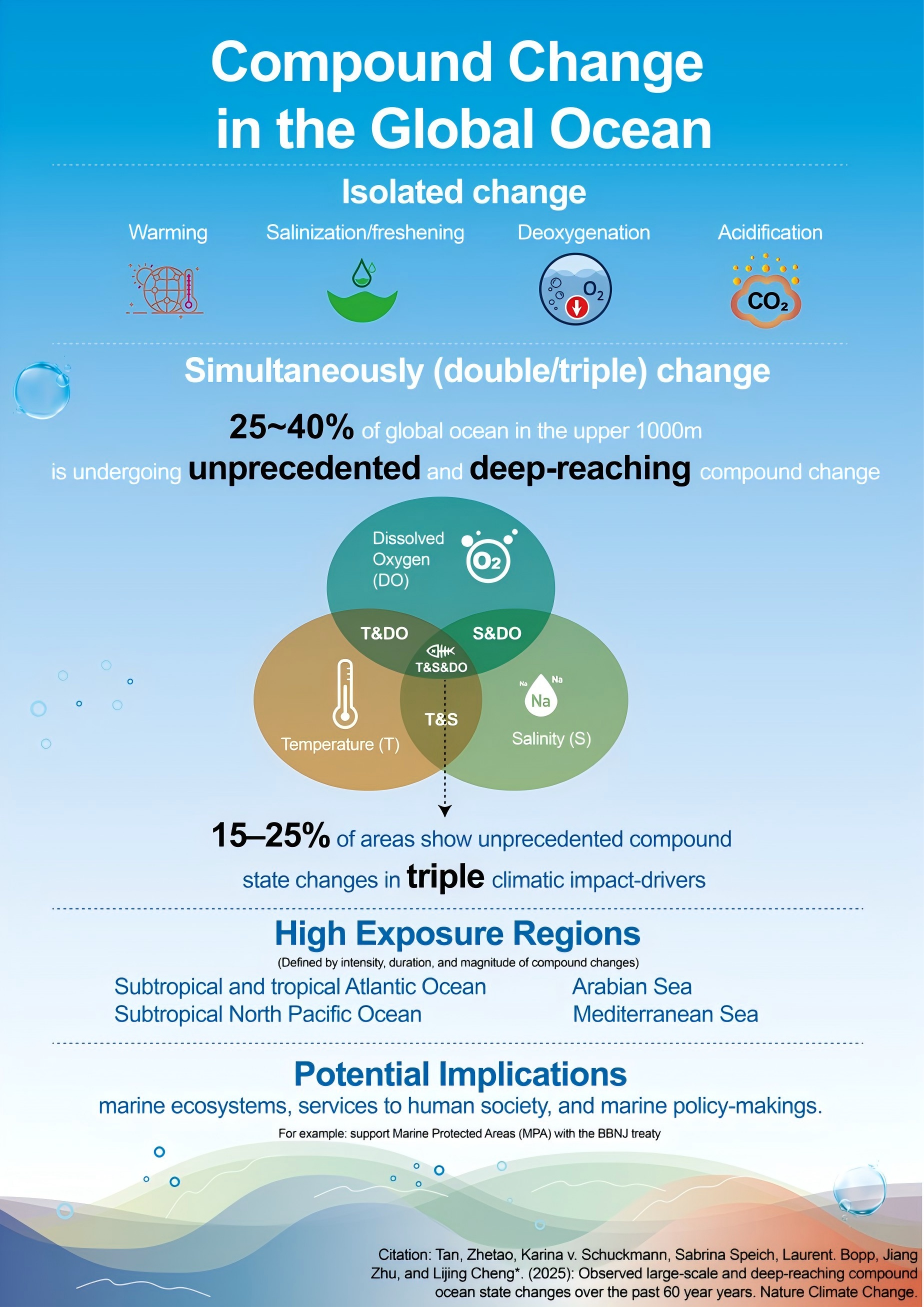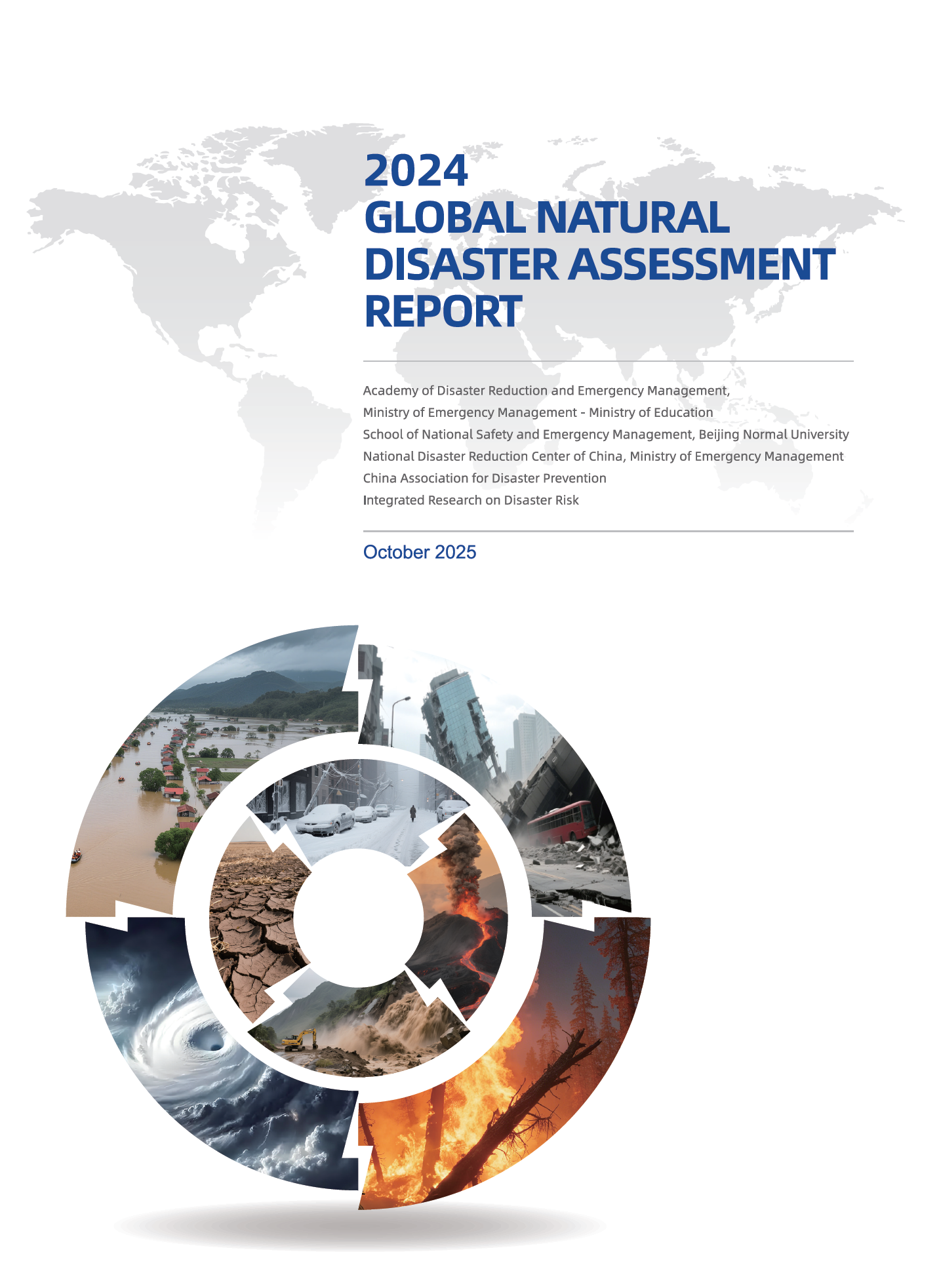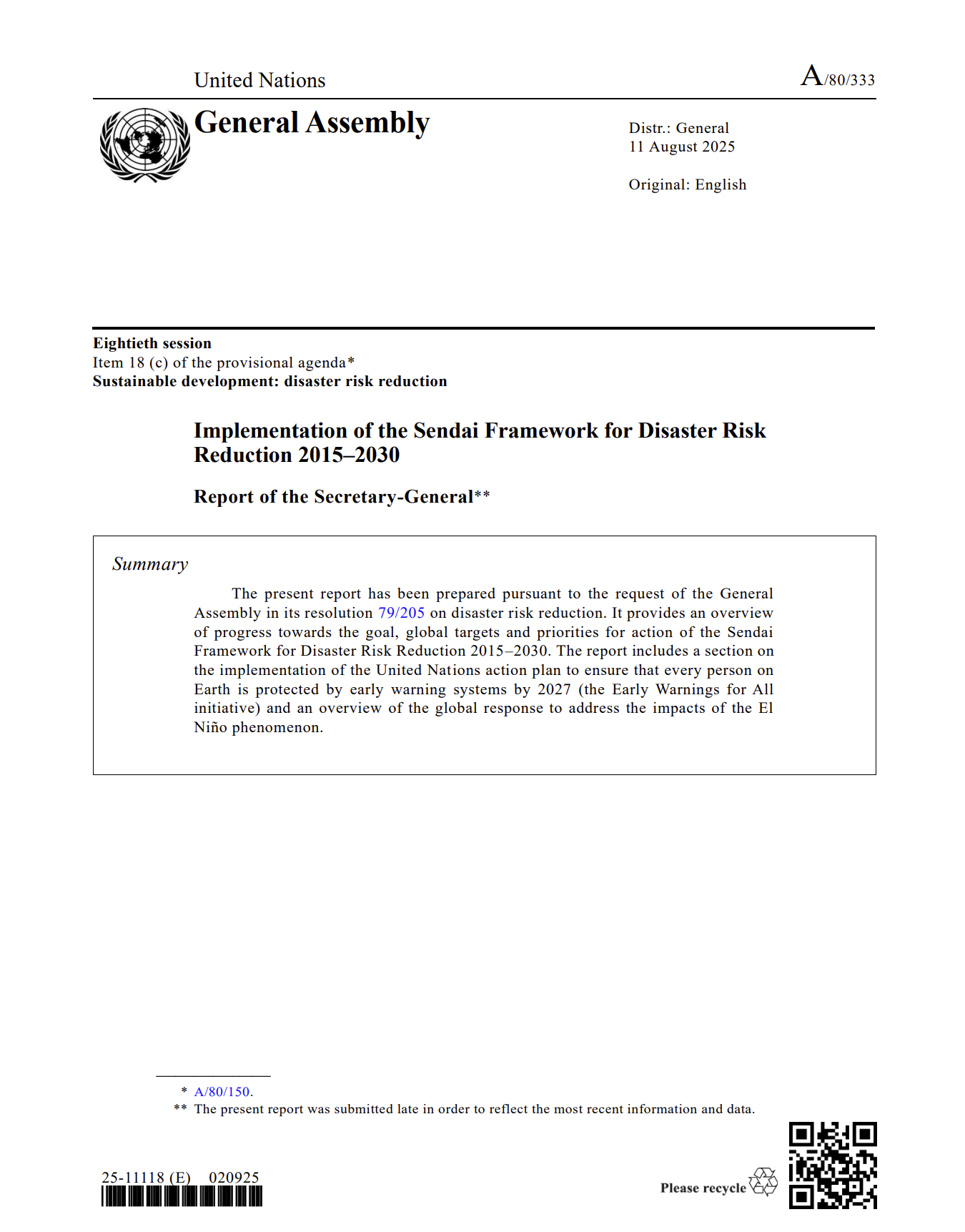This blog presents various examples of co-designed DRR products and processes across different geographical contexts. These multi-stakeholder cases briefly illustrate the participation of diverse actors and provide examples of the active role of plural form of knowledge and science in the co-production and implementation of DRR actions. The examples also reflect different DRR approaches, including prospective, corrective, and compensatory risk management.
These cases contribute to the IRDR Policy Brief "Science-based disaster risk reduction products and approaches for place- and context- specific actions".
China[1]
Developing technology-driven, integrated DRR strategies and products
DRR approach: corrective
Type of DRR action: reducing current and future risk
Following severe flooding in 2020 along the Yangtze River Basin, which was one of the most devastating floods in China in the past 80 years, the Ministry of Emergency Management (MEM) convened a national expert panel to evaluate DRR science and technology tools. The panel included hydrologists, AI specialists, disaster science experts, and remote sensing professionals from research institutes, universities, and industry. The review assessed technologies such as AI-driven flood prediction models, satellite-based real-time monitoring systems, unmanned aerial vehicles for rapid damage assessment, and Internet of Things (IoT)-enabled early warning networks. Key challenges identified included data fragmentation between agencies and limited community-level tech adoption. The panel recommended integrating multi-source data into a unified national DRR platform, scaling the use of AI predictive analytics, and deploying mobile applications for public risk communication. These findings informed the release of the policy paper on promoting the development of emergency management Informatization by the MEM. This collaborative review underscored China's shift toward technology-driven, integrated DRR strategies, aligning with the UN Sendai Framework for DRR and enhancing resilience to escalating climate risks.
Colombia[2]
Collaborative action-oriented research for implementing climate adaptation plans in peri-urban areas
DRR approach: community-based / corrective
Type of DRR action: reducing current risk
Medellín, at the center of the Aburrá Valley (second largest metropolitan area in Colombia, with a population of 3.6 million), experienced increasing urbanization, characterized by informal growth along the rural-urban border, generating vulnerable peri-urban areas that are exposed to disaster risks, which are increasing with climate change. A collaboration among Medellín’s Community 8 Housing Board, the Disaster Risk Management Department (DAGRD), Colombia National and Antioquia Universities, and Edinburgh and Heriot-Watt Universities has evidenced that with support from a multidisciplinary research team and use of information sharing technologies, vulnerable communities can implement bottom-up participatory landslide risk monitoring and climate change adaptation measures.
Approximately half of the northeastern edge of Medellín is exposed to risk of landslides, flooding, and torrential rain, affecting 150,000 residents. Based on a dialogue that included geotechnical and social knowledge, community organizations with government institutions have co-designed action-oriented research to develop an integrated risk and climate adaptation plan. Through a co-production process, the developed plan has delivered the implementation of risk mitigation actions, through an inter-institutional articulation strategy connecting government processes with community priorities, as well as disaster risk management with climate change adaptation in several neighborhoods. The strong organizational capacity of this community has facilitated this process, together with ongoing local government-led plans for risk mitigation and climate adaptation. This collaborative process has enabled efficient and timely interventions applying nature-based solutions to DRR mitigation, supported by training and capacity building programs.
European Union / Germany[3] [4]
Information products and analyses to support effective DRR and to assess the needs for post-disaster response, recovery, and reconstruction planning
DRR approach: corrective and compensatory
Type of DRR action: reducing current and residual risk
The Joint Research Centre (JRC) of the European Commission promotes the use of space technologies for DRR, including the development of information products and analyses that support more effective DRR, conflict prevention, and post-disaster response, recovery, and reconstruction planning. The JRC also provides high-resolution satellite imagery to quantify building stock – the data assists in deriving the building height, estimating building age and characteristics, and assess human presence within structures. This information is critical for both risk assessment and emergency rescue operations. Additionally, the JRC supports the Emergency Management Service, which aims to assist local users in crisis management by providing information derived from satellite data integrated with other data sources.
A cooperation between the Center for Disaster Management and Risk Reduction Technology (CEDIM) of the Karlsruhe Institute of Technology (Baden-Württemberg, Germany) and the science and technology company Risklayer is a strong example of co-designed and co-produced DRR products using satellite imagery. This partnership resulted in the development of Risklayer Explorer, an information platform for real-time disaster monitoring. Scientists, disaster management professionals, decision-makers, and the interested public can assess detailed information through easy-to-understand metrics, comprehensive reports, and informative graphics. During the COVID-19 pandemic, the Risklayer Explorer product enabled CEDIM to compile and summarize key data from official governmental sources, presenting it for Germany and globally through simple, interactive maps. The product was used by national media for science-based public communication and by local policymakers to support evidence-based decision-making.
Indonesia[5]
Tsunami EWS technology coupled with local-traditional-indigenous knowledge (LTIK) module
DRR approach: compensatory
Type of action: response preparedness
Two decades of experience following the 2004 Indian Ocean Tsunami and Earthquake in Aceh Province, Indonesia, have provided valuable insights into resettlement practices, risk-informed planning, and design considerations for successful resettlement and resilient recovery. Drawing on international humanitarian experience, de-risk investments – such as end-to-end tsunami early warning system (EWS) and local knowledge integration – and the Build Back Better agenda, the Resilience Living Lab was established in 2024 in Banda Aceh, Indonesia. The Lab supports the ASEAN Sustainable Resilience agenda and serves as a multidisciplinary learning platform for resilience and knowledge co-production aimed at systemic risk reduction of future mega-disasters. The Lab should reflect significant improvements in tsunami mitigation and coastal risk reduction strategies across Southeast Asia, promote a culture of resilience, and translate the local DRR agenda into practice through field-based learning and life-long education. In addition, the Lab aims to support multi-level efforts in co-developing a new resilience recovery model – one that humanizes technologies, particularly tsunami EWS – and to leverage LTIK, such as the ‘smong’ oral tradition from Simeulue Island. Scientific evidence and technical information are used withing the Lab to engage local policymakers and disaster managers, translating complex information into formats that are easily understood by local communities. In doing so, the Lab enhances humanitarian action and risk-informed development efforts across vulnerable regions.
Malaysia[6]
EWS technology coupled with LTIK module
DRR approach: compensatory
Type of action: response preparedness
In Malaysia, flood hazards account for the highest number of economic losses, while landslides and debris flow hazards are the leading causes of human casualties. As part of a multi-scale early warning system (EWS), which provides seven-day forecasts as well as short-term alerts (public announcements), a community-based siren system was introduced to empower local communities and enhance the safety of vulnerable rural populations. The Department of Mineral and Geoscience, in collaboration with Universiti Teknologi Malaysia, established a multi-year smart partnership to co-produce a people-centered EWS for debris flow in Jerai Geopark (Yan, Kedah), a region known for tourism and food security. As the country’s first community-led program of its kind, this initiative combines state-of-the-art EWS technology with a LTIK module. To support science-policy-society intervention, the involvement of lawmakers has been key in translating local DRR actions to national level. In this context, the All-Party Parliamentary Group Malaysia - Disaster Risk Management was launched by the Malaysian Parliament to promote an all-of-society and localization approach in addressing climate-induced disaster risk.
Mexico[7]
Climatic risk mapping for prospective urban planning and land use regulation
DRR approach: prospective
Type of DRR action: understanding and preventing future risk
Guadalajara, the third largest metropolitan area in Mexico, regularly experiences flooding, which has worsened over the past two decades due to the urbanization of peri-urban forests and the loss of green and permeable areas within the city. In response, the coalition of metropolitan governments commissioned the local Development Planning Institute (IMEPLAN) to update its climatic risk assessment and produce maps to help municipalities regulate land use and improve their zoning criteria. The assessment, developed through a collaboration between IMEPLAN and an interdisciplinary team of the National Autonomous University of Mexico, incorporates state-of-the-art urban climate and social vulnerability models.
It generated a series of maps that clearly identified flood prone areas, along with a classification of unoccupied urban areas that should be prioritized for protection due to their ecosystem services (e.g., water infiltration) and risk reduction value (particularly in relation to urban heat island and peri-urban fires). The project also included a strong knowledge transfer component for IMEPLAN practitioners, enabling them to update and manage the GIS tools and effectively communicate these tools to local stakeholders, who would need to adapt to the new mandatory planning criteria. To support social acceptance, a set of simplified maps and a communication strategy was developed.
Mozambique[8]
Flood and cyclone-resilient techniques labor training and implementation plan in classroom facilities
DRR approach: corrective
Type of DRR action: reducing current risk
The Safer Schools Initiative is a part of Mozambique government’s efforts to develop national school safety guidelines and ensure that schools are resilient to large-scale damage by promoting by promoting the construction of safer buildings. This initiative was developed by INGD (government institution responsible for coordinating the DRR actions in Mozambique) in collaboration with Eduardo Mondlane University in Maputo, with support from international partners such as the World Bank and UN-Habitat. The resulting multi-hazard resilient infrastructure serves dual purposes: 3500 flood-resistant schools that also function as emergency shelters, constructed using local labor trained in cyclone-resilient building techniques. These structures include elevated foundations (at least 1.5 meters above flood levels), reinforced roofs (capable of withstanding at least 240 km/h winds), and integrated drainage systems that have reduced flood durations by 75% in pilot areas. The initiative ensures long-term impact through annual training of school-based disaster committees in evacuation procedures and shelter operations, thereby maintaining permanent local risk management capacity.
Senegal[9]
DRR information products and services aimed at improving living conditions and risk communication
DRR approach: corrective
Type of DRR action: reducing current risk
Senegal's diverse geography – spanning the arid Sahel, flood-prone coast, and humid southern areas – faces increasing climate risks, including droughts, floods, and storms that disproportionately affect vulnerable populations. To address critical communication gaps, UNDRR partnered with Senegal's National Agency of Civil Aviation and Meteorology (ANACIM) and the tech firm Jokalante, which provides information products and services aimed at improving living conditions. Together, they developed a voice-based EWS tailored for low-literacy communities. Recognizing the limitations of text-based alerts for these populations, the initiative introduced localized voice messages delivered through 30-second phone calls. This system complements existing SMS and radio alerts by offering accessible forecasts on wind, heatwaves, and heavy rainfall. Jokalante conducted community assessments to tailor the content of the messages, while ANACIM provided meteorological data to enable rapid elert distribution through local leaders. Since its pilot in 2018, the system has delivered over 200,000 voice messages annually helping fishers to avoid dangerous winds and farmers to optimize planting. It demonstrated how inclusive technology can enhance both safety and community participation in DRR efforts.
United States of America[10] [11]
Products developed in close cooperation between DRR stakeholders
DRR approach: corrective
Type of DRR action: reducing current and residual risks
DRR products are widely used across various phases of DRR efforts. The products are typically developed through close collaboration among multiple stakeholders, including scientists, engineers, and disaster management professionals. The National Oceanic and Atmospheric Administration (NOAA) provides continuous broadcasts of official weather information, including warnings for tornadoes, floods, hurricanes, and other severe weather events. The Federal Emergency Management Agency (FEMA) uses geographic information system tools to map disaster-affected areas, supporting responders and decision-makers in understanding the scope and severity of events such as hurricanes, wildfires, and earthquakes. FEMA-developed tools like HAZUS and RiskMap are widely adopted, not only in USA but also by other countries, to estimate disaster impacts and support policymakers and planners in assessing risks and making informed decisions. However, some DRR products require adaptation to specific hazard-prone local contexts. This highlights the need for stronger collaboration among disaster management authorities, product producers, other relevant DRR stakeholders, and the local communities.
[1] https://www.mem.gov.cn/gk/zfxxgkpt/fdzdgknr/202105/t20210513_385059.shtml
[2] https://doi.org/10.5871/jba/009s9.007
[3] https://joint-research-centre.ec.europa.eu/projects-and-activities/space-technologies-disaster-risk-reduction-and-response_en
[4] https://www.risklayer-explorer.com/
[5] https://mjiit.utm.my/dppc/2024/20th-commemoration-tsunami-aceh
[6] https://doi.org/10.5194/egusphere-egu24-19871
[7] https://publicaciones.geografia.unam.mx/index.php/ig/catalog/book/196
[8] https://unhabitat.org/sites/default/files/2023/12/bcr_mozambique_safer_school.pdf
[9] https://www.undrr.org/node/79474
[10] https://research.noaa.gov/products-resources
[11] https://www.fema.gov/flood-maps/products-tools





